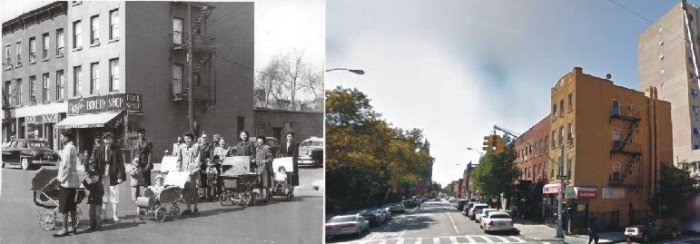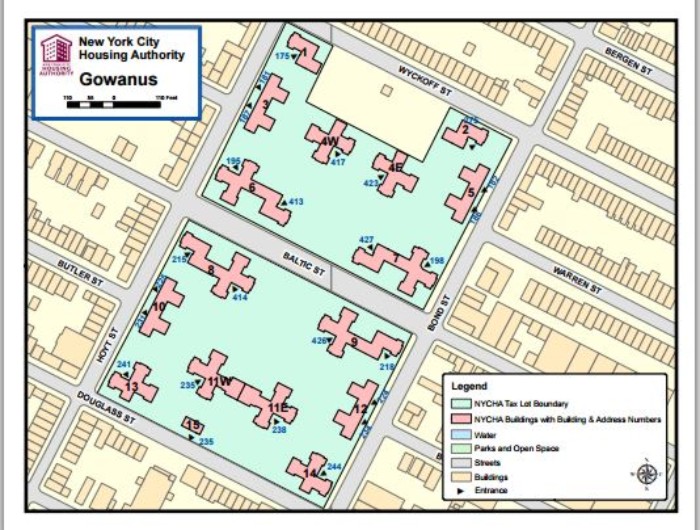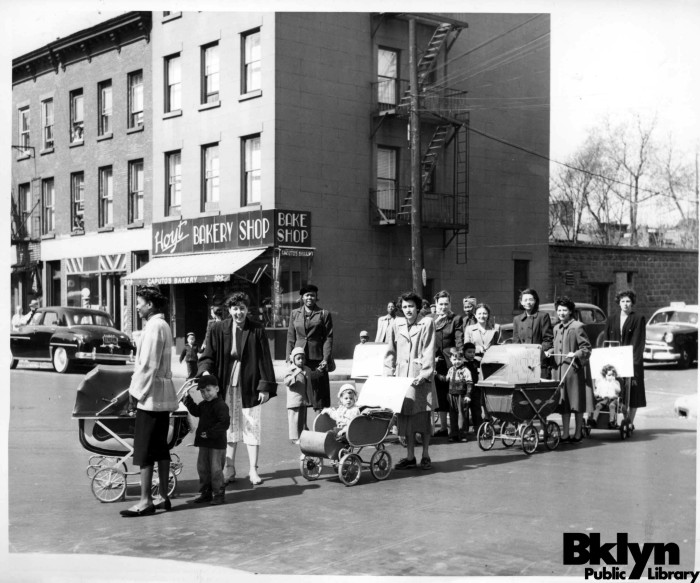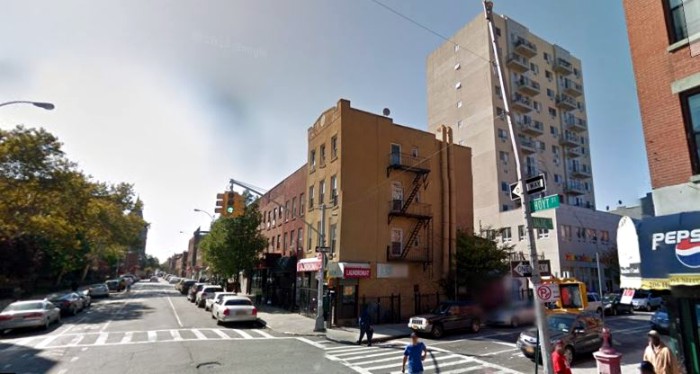Past and Present: The Gowanus Houses’ Baby Buggy Brigade, 1952
A look at Brooklyn, then and now. Debates over the placement and cost of public housing are as ingrained in our city’s history as the buildings that surround us. Tenements and the abysmal conditions of our poorest areas were hot topics in the 19th century, and are still hot topics now. Through hard fought reform,…
A look at Brooklyn, then and now.
Debates over the placement and cost of public housing are as ingrained in our city’s history as the buildings that surround us. Tenements and the abysmal conditions of our poorest areas were hot topics in the 19th century, and are still hot topics now.
Through hard fought reform, by the very beginning of the 20th century, tenants of these buildings were required by law to have indoor bathroom facilities, running water, fresh air and light. The fact that some thought providing those necessities was giving too much shows how we’ve progressed.
By the time the 1930s rolled in, the lack of quality affordable housing in our city was a dire situation, made much worse by the Great Depression. The need for government-financed public housing was clear.
In 1934, the New York City Housing Authority (NYCHA) was established. The Authority’s first project was called, appropriately, First Houses, on the Lower East Side of Manhattan.
The first federally funded Brooklyn project was the Williamsburg Houses, completed in 1938. The Red Hook projects were the first to be funded with state money, through NYCHA. They were built in 1938-39.
NYCHA housing was initially designed to house the working class and working poor, not the destitute. The program was designed to keep working folk in the city, and the first tenants for both the Williamsburg and Red Hook houses were carefully screened.
The success of the earliest city projects gave rise to more of them. After World War II, Robert Moses tore down entire blocks of 19th-century row houses, warehouses and factories in order to build what he thought was a superior modern city.
In the Boerum Hill-Gowanus neighborhoods, this resulted in the creation of the Gowanus Houses, which broke ground in 1948, followed by the smaller Wyckoff Gardens Apartments a few years later.
The Gowanus Houses were completed in 1949. They consist of 14 buildings, with a mixture of sizes and heights: there are buildings of 4, 6, 9, 13 and 14 stories. The complex is almost 13 acres in size, and was originally built with 881 units. Now it has 1,134.
The early tenants of both projects were working-class families, many of whom had been displaced by the building of the projects in the first place. They worked in the nearby factories of Gowanus and on the docks. They were also teachers, clerks, city workers, domestics, laborers and other workers.
The Gowanus Houses were integrated, with black, white, and Hispanic tenants. As with many other American families, many of the wives stayed home with young children.
That brings us to our “Past” photo. This photograph from the Brooklyn Collection of the Brooklyn Public Library was originally printed in the Brooklyn Eagle on April 21, 1952.
Brooklyn Eagle, April 21, 1952. Brooklyn Public Library.
The caption reads: “Baby buggy brigade — Charging that lack of traffic light at Hoyt and Baltic Streets invites motorists to use streets as speedway, mothers from adjacent Gowanus Houses block off intersection with baby carriages. Demonstration was ended when police promised to station a patrolman at corner until city acts on traffic light plea.”
No mother would take the chance that her child would be hit by oncoming traffic, so I’m sure there were police out of camera range to protect them all.
The other buildings in the photo are also interesting. The storefront on the corner is no longer a bakery, today it’s a laundromat. It was a pretty bakery, with great 1930s lettering on the signage.
The buildings next door still had their cornices, so we can narrow down the window of when they were removed. Don’t people realize how naked buildings look without their cornices? And practically speaking, they help deflect water from the façade.
The cornices all looked to be in perfect shape in 1952, when they were about 90 years old. Chances are they would still look great. What a waste.
A lot of things happened in 1952. Queen Elizabeth of England took the throne, Puerto Rico became a commonwealth of the U.S., the Korean War limped on after peace talks failed, and Nelson Mandela was arrested. Jackie Robinson was the highest paid baseball player in Brooklyn Dodger history.
Two months before the 1952 photo was taken, NYC approved the use of three-colored traffic lights. The city also installed the first Walk-Don’t Walk signs, in Manhattan. The rest of the city followed.
The Gowanus Houses ladies won. Today there is a traffic light at the Baltic and Hoyt Street intersection. The Gowanus Baby Buggy Brigade rules!
Google Maps









I liked the pic. on the corner of my block.
Too bad the Warren & Hoyt and Warren & Bond corners still feel very dangerous as cars gun it while a lot of foot traffic heads to & from the Bergen F/G.